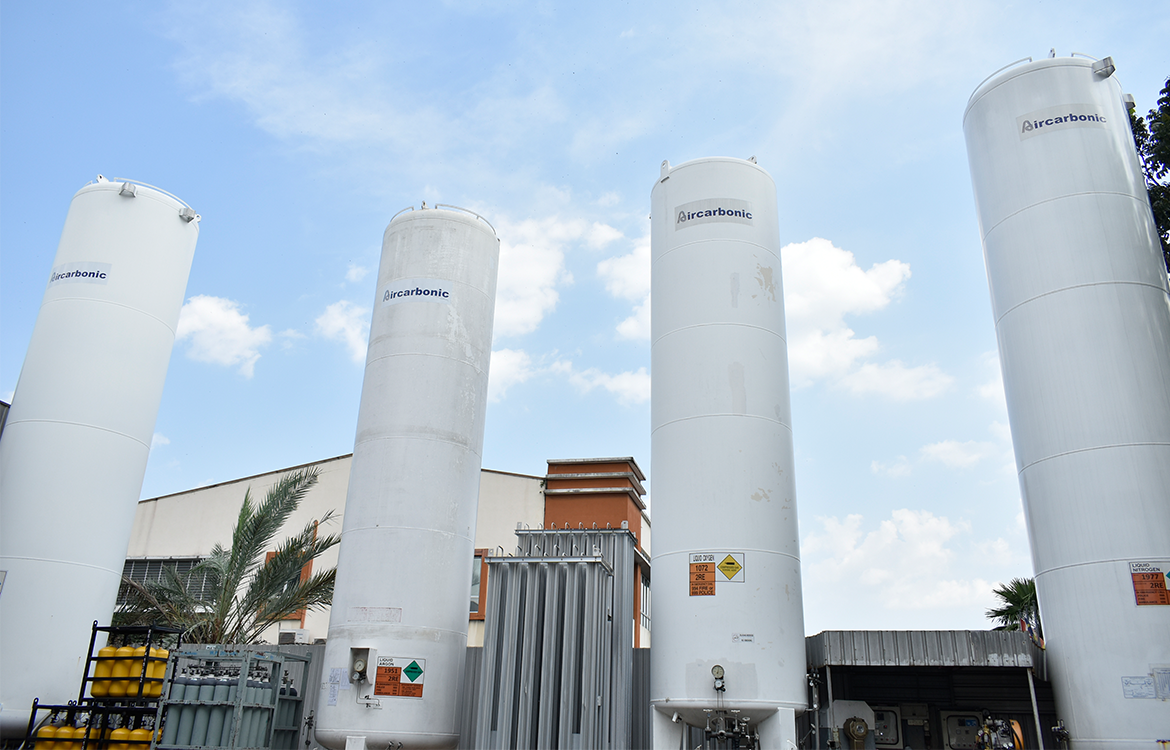Cylinder Safety Tip: Cap It!
Valve protection caps for full or partially full cylinders designed to accept caps must always be in place and hand-tight except when these cylinders are in process or connected for use.
Please do not switch caps since not all our cylinders use the same cap threads. A cracked or dented cap should be brought to our attention. Always use suitable tools in accordance with the manufacturer’s instructions or ask us for guidance to remove stuck caps. Inserting tools through the vent hole can lead to valve damage or the inadvertent activation of the valve, releasing cylinder contents. Such releases can lead to dangerous situations including fire, oxygen-deficient atmospheres, or toxic atmospheres.
Remember to always have cylinders secured when they are in-use and without their caps.
Microbulk System
Microbulk SystemAircarbonic microbulk system reduces costs, increases safety, and maximizes efficiency. The basic idea behind microbulk is replacing cylinders with one, or a few, larger tanks. These tanks are piped into the facility so the gas is available at its points of use. Our truck stops and fills the tank; there’s no cylinder exchange.
Cost reduction is made possible because the system eliminates residual gas loss, reduces the labor costs associated with moving dangerous cylinders, and creates more profitable space in the workplace. This gas system eliminates the residual waste that normally gets sent back in cylinders, allowing more product to be used. The microbulk customer does not have to worry about moving and changing out heavy cylinders, nor does a microbulk user have to dedicate half of the workspace to cylinder storage.

Cryogenic Liquids
Cryogenic LiquidsThe Compressed Gas Association (CGA) splits compressed gases into two primary categories depending on their physical state in containers under pressures and temperatures, and in their range of boiling points:
Non-liquefied gases and liquefied gases. When non-liquefied gases, which are those that are gaseous at ordinary ambient temperatures regardless of pressure applied, are cooled to temperatures below their boiling points, they become liquefied. At these low temperatures, they are referred to as cryogenic liquids. Common examples of cryogenic liquid supplied by Aircarbonic are Argon and nitrogen.
Because the temperature difference between the product and the surrounding environment is substantial, keeping the surrounding heat from the product requires special equipment to store and handle cryogenic liquids. A liquid cylinder, commonly called a Liquid Dewar, is constructed like a vacuum bottle; it is designed to keep heat away from the liquid that is contained in the inner vessel. Liquid cylinders operate at pressures up to 350 psig and have capacities between 80 and 450 liters. Product may be withdrawn as a gas by passing liquid through an internal vaporizer or as a liquid under its own vapor pressure.
Cryogenic liquid containers are equipped with pressure relief devices to control internal pressure. Under normal conditions, these containers will periodically vent product (a loud hissing noise); never plug, remove, or tamper with any pressure relief device. Because venting is an intentional design aspect of the container, always store and use liquid cylinders in an open space with adequate ventilation. To move, use a cart designed to handle liquid cylinders. Never allow any unprotected part of the body to come in contact with un-insulated pipes or equipment that contains cryogenic product. Face shields and cryogenic gloves are strongly encouraged. For more safety information, always refer to the product label and MSDS.




